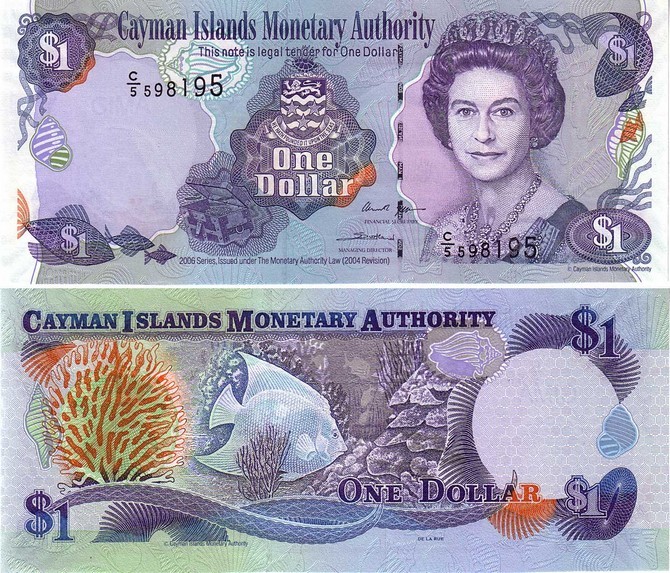06 Apr Best & Top Performing ETFs Mutual Funds in India


The returns generated by Nifty Bank BeES in the last 5 years was 33.12% while Nifty Bank returned 76.29% during the same period. To make your research that much simpler, we’ve arranged the top ETFs in India by market capitalization. Bear in mind that ETFs are a type of mutual fund, so market cap in this context means Assets Under Management . ETFs are an excellent hedging vehicle because they can be borrowed and sold short.
In fact, the entire purpose of investing is to achieve financial goals. The AUM of this ETF is Rs. 17,130 crores while the returns since inception stand at 8.54%. You’ll notice that the returns are in line with Nifty 50 as well. CPSE ETF or Central Public Sector Enterprises ETF was launched on March 28th, 2014 – a day after India was declared Polio-free by WHO.
Investors and traders can buy and sell an ETF at any time based on their financial goals. That said, a one-size-fits-all is not known to work in the world of investing. That’s why you’ll need to understand your risk profile, evaluate your financial goals, and consider other factors before investing in ETFs. Once you have a Demat and trading best etf in india account, you’ll need to evaluate the factors covered in this section and more before you decide whether or not to invest in ETFs. That’s why an investor can benefit from narrowing down and writing down their financial goals. This, coupled with a strong idea of risk profiles, may help you understand whether ETFs are right for you.
Benefits of Investing in Exchange Traded Funds
ETFs are made to follow a specific index or sector, so they only need a little management, which keeps costs down. They are also a good option for investors who want to keep their costs down because they have low management fees. They offer many potential benefits, such as higher returns with lower risk, diversification, cost-effectiveness, and tax advantages.
The asset is designed to track a pool of securities that are listed on the Indian stock exchanges. Underlying securities could include mutual funds, Bonds, stocks, etc. Over time, ETFs have become an easy and a preferred route for many investors to take exposure to the markets.
Is there a S&P 500 ETF in India?
1. Current NAV: The Current Net Asset Value of the Mirae Asset S&P 500 Top 50 ETF as of Mar 23, 2023 is Rs 27.65 for Growth option of its Regular plan. 2. Returns: Its trailing returns over different time periods are: -4.03% (1yr) and 1.35% (since launch).
Accordingly, attract 10% tax for gains above INR 1,00,000. ETFs are used by traders and institutional investors for hedging risk, as they can be borrowed and sold short. Are popular as investors can get exposure to commodities without having to learn about investing in commodity derivatives. Lastly, it’s essential to understand how ETFs manage and ensure that the ones you’re investing in are tracking the index they are supposed to.
Mutual Fund Trailing Returns show returns of various periods. The returns can be sorted from highest to lowest to find the Top and Best Performing Mutual Funds in each category. You can find Mutual Fund returns for the period 1 week, 1 month, 3 months, 6 months, I year, 3 years, 5 years, 10 years, Since Inception and YTD . In the trailing returns all the schemes have been considered irrespective of Scheme AUM.
The profit you earn from an ETF depends on the stock market conditions. On a rolling basis, stocks which come in top 80% of total market-cap are considered largecaps, next 15% midcaps and remaining 5% smallcaps. Lately, ETFs have been gaining importance over other investment options. Investors who find it challenging to analyze and pick a stock to have in their portfolio have been investing in ETFs. The most important of these is that they can be more volatile than stocks because they contain multiple assets and can be subject to market movements. One of the best things about ETFs is that they are cheap.
India’s Top Index ETFs to Invest in for 2023
This ETF is built to mirror the Nifty Bharat Bond – April 2031 index. It was launched on July 23rd, 2020 and invests in bonds, debentures, and government securities that are at least AAA rated. Launched on December 26th, 2019, the ETF invests in various types of debt instruments like debentures, government securities, and bonds that mature on or before 2030. The ETF has an AUM of Rs. 65,627 crores, making it one of the biggest ETFs in India by market cap. The ETF has generated similar returns to Sensex since its inception (13.86% vs 14.91%). While the previous ETF from SBI mirrored Nifty 50, this one tracks Sensex – an index that contains 30 of the biggest stocks in India.
Is ETF good for long term in India?
ETFs are less volatile than stocks, so they do not give very high returns in a short period and similarly do not fall rigorously like stocks. ETFs are only for those who want slow and steady returns in the long term. For anybody expecting good returns overnight, an ETF is not a good option for you to invest in.
Both ETFs and mutual funds pool money from investors and invest in various assets such as stocks, bonds, and commodities. However, there are some critical differences between the two. In an actively managed Mutual Fund, you invest your money in a scheme and then an expert called the Fund Manager uses his or her expertise to build a portfolio of securities. The fund manager and his/her team take tactical calls including which stocks to buy or sell and at what price. This style of investing often involves multiple buy and sell transactions, so, is called active investing, and schemes implementing this strategy are called actively managed mutual funds.
Just like equity shares, these are traded on stock exchanges during regular market hours. A number of factors influence the performance of a mutual fund, such as the fund manager’s track record, AMC’s track record, etc. It may require investors to have some expertise in identifying a good mutual fund that is capable of outperforming its peers and the index in the future. Exchange-Traded Funds, however, track a benchmark index and therefore carry limited scope of out-performance or underperformance. Please read all scheme related documents carefully before investing.
Overall, the SBI Nifty 50 ETF has generated returns similar to Nifty 50’s ever since its launch (11.75% Vs 11.91%) and has an expense ratio of 0.07%. ETFs combine the range of a diversified portfolio with the simplicity of trading a single stock. Investors can purchase ETF shares on margin, short sell shares, or hold for the long term. ETFs can be bought / sold easily like any other stock on the exchange through terminals across the country.
Exchange Traded Funds(ETFs)
Entry loads, exit loads, expense ratios, taxes, and more can eat into your profits. Once you’ve understood your risk profile, you’ll be able to determine whether or not investing in ETFs is right for you. More importantly, it’ll help you determine if ETFs can help you achieve your financial goals. Acquiring essential knowledge about an asset like ETFs can help you make informed decisions. In fact, the first step to becoming an informed investor is to understand your risk profile and investment goals. The AUM of Nifty Bank BeES stands at Rs. 8,705 crores with an expense ratio of 0.19%.
Consider the ETF’s underlying holdings, expense ratio, and performance track record. You can also diversify your portfolio by investing in ETFs with exposure to different asset classes, such as stocks, bonds, and commodities. It’s essential to research and carefully evaluate each ETF before deciding. The period you need to stay invested in an Index Fund will be determined by the type of index that the scheme is tracking. If you have invested in an index mutual fund that tracks an Equity-oriented index such as the NIFTY 50 or NIFTY 100, you have to stay invested for the long term i.e. over 5 years. This way your investments will get sufficient time to grow.
Please write the Bank account number and sign the IPO application form to authorize your bank to make payment in case of allotment. In case of non allotment the funds will remain in your bank account. Since 1996, Equitymaster has been the source for honest and credible opinions on investing in India. With solid research and in-depth analysis Equitymaster is dedicated towards making its readers- smarter, more confident and richer every day.
Gold Rate Trends
For example, a NIFTY Index Fund invests in stocks of companies comprising the NIFTY 50 Index in the same proportion and aims to achieve a return equivalent to the NIFTY 50 Index. For example, as Reliance has a 10.3% stake in the NIFTY 50, the fund manager of a NIFTY Index Fund will build a portfolio where the weightage of stocks of Reliance company will be 10.3%. Similarly, stocks of other companies will be held in equal proportion as the index.
- They provide investors with exposure to a variety of different asset classes, such as stocks, bonds, commodities, and more.
- These funds invest in securities as per their proportion, reflected in an existing index.
- While the previous ETF from SBI mirrored Nifty 50, this one tracks Sensex – an index that contains 30 of the biggest stocks in India.
- In the event that Alpaca Securities LLC fails, and is placed in liquidation under the Securities Investor Protection Act, securities in your brokerage account may be protected up to $500,000.
In the case of an Index Fund, the fund manager only replicates the index that is being tracked, so, there is no bias with respect to stock selection in this case. For example, an Index Fund tracking the NIFTY Next 50 Index will only invest in the 50 stocks that comprise the Next 50 Index. Moreover, the individual weight of each stock in the Index mutual Fund will be the exact same as their proportion in the NIFTY Next 50 Index. As the fund manager does not have to select and invest in stocks by himself/herself or have to time entry and exit into individual stocks, there is no risk of personal bias. The scheme seeks to generate reasonable returns with investments in government securities, securities guaranteed by the call money markets. The scheme seeks to generate returns that are in line with the performance of gold, subject to tracking errors.
Generate Consistent Returns With Best MNC Mutual Funds (
Bharat Bond ETF – April 2030 is the first of many debt ETFs to feature on this list. The debt instruments that Bharat Bond ETF – 2030 invests in have a high credit rating. In fact, it’s similar to the Nifty BHARAT Bond Index – April 2030. This Sensex ETF is managed by UTI Mutual Fund, which is one of India’s oldest AMCs. UTI-S&P BSE Sensex ETF was launched on September 1st, 2015. Just like the previous ETF, this one also mirrors Sensex.

In these challenging times of lockdown and quarantine, everything around us is at a literal standstill, including our stock market. It’s not a surprise that the Indian markets are currently witnessing massive volatility due to the Covid-19 pandemic. Many of us now wish they had diversified their portfolio, or are looking for efficient ways to diversify it now. Gold ETFs are a great portfolio if invested into with caution. You may not want to invest all your money on this, because gold ETFs are not very profitable in long-term investment.
Is ETF good for long term in India?
ETFs are less volatile than stocks, so they do not give very high returns in a short period and similarly do not fall rigorously like stocks. ETFs are only for those who want slow and steady returns in the long term. For anybody expecting good returns overnight, an ETF is not a good option for you to invest in.


Sorry, the comment form is closed at this time.